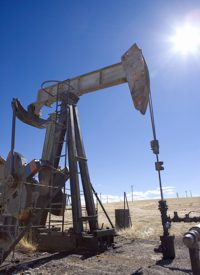
The “Hard Truths” report stated that although “the world is not running out of energy resources … there are accumulating risks to continuing expansion of oil and natural gas production … [which] create significant challenges to meeting projected total energy demand.” As a result, the concept of “Energy Independence” is “not realistic in the foreseeable future” and therefore “the United States must moderate the growing demand for energy.”
In NPC’s letter to Secretary of Energy Steven Chu introducing the latest study, chairman James Hackett said
Extraordinary events have affected energy markets in the years since the NPC reported on the “Hard Truths” about energy in 2007. That study concluded that the world would need increased energy efficiency and all economic forms of energy supply.
This is still true today, but since then, significant technology advances have unlocked abundant natural gas and oil resources. These greatly expanded resources have already benefited our country economically. Increased supplies of natural gas have resulted in lower prices and helped revitalize many U.S. industries.
The study announced several conclusions:
First, the potential supply of North American natural gas is far bigger than previously thought. It is now understood that the natural gas resource base is enormous and that its development … is potentially transformative for the American economy….
Second — and surprising to many — North America’s oil resources are also much larger than previously thought. These oil resources offer substantial supply for decades and could help the United States reduce, though not eliminate, its reliance on imported oil.
As noted by Clay Bretches of Anadarko Petroleum, a contributor to the NPC report, “It’s amazing how far we have come in just four short years. And we’re just seeing the beginning of it.”
These conclusions are rocking the establishment’s reliance on such now-disproven myths as “peak oil” and the necessity to “go green” in order to reduce reliance on liquid hydrocarbons. “Peak Oil” is the point when, according to Wikipedia, “the maximum rate of global petroleum extraction is reached, after which the rate of production enters terminal decline." This theory was developed by geologist M. King Hubbert in 1956 to predict that production of oil in the US would peak between 1965 and 1970, with negative repercussions resulting: the price of oil would skyrocket, driving the economies of the world into depression, major changes would be needed in the transportation habits of American citizens, and so on. At the introduction to this topic, Wikipedia noted: “This article is outdated. Please update this article to reflect recent events or newly available information.”
As Ed Crooke noted in the Financial Times, “For three decades, it seemed [Hubbert] was right. Production peaked in 1971 and fell relentlessly for more than 30 years.” But then the convergence of opportunity and technology just after the publication of “Hard Truths” in 2007 took form as exploration and development of the Bakken Formation in North Dakota, and the oil sands near Alberta, Canada, began and the discovery of the “pre-salt” oil resources off the coast of Brazil happened.
These were in addition to the Eagle Ford shale and Permian basin in Texas, and the Utica shale in Ohio and Pennsylvania. As noted in the Financial Times, Canada could double its production from the Alberta oil sands in the near future, having already overtaken Saudi Arabia as the largest exporter of oil to the United States. So vast are the newly discovered reserves and so powerful are the new technologies in discovering and exploiting them that some are estimating total energy independence for North America by 2035.
This has the potential of upsetting the OPEC cartel which currently holds 79 percent of the world’s crude oil reserves and 44 percent of the world’s crude oil production. By shifting the “oil map” to the western hemisphere, OPEC would find its influence over oil prices waning substantially. The increasing domestic production of oil and other liquid hydrocarbons is already reducing the United States' oil imports. Based on data supplied by the Energy Information Agency, Professor Mark Perry has created a graph that illustrates the point precisely.
The surprise resurgence of domestic energy production has made nonsense of the predictions made by politicians of imminent danger of running out of oil. In President George Bush’s State of the Union speech in 2006, he said,
We have a serious problem: America is addicted to oil, which is often imported from unstable parts of the world. [We need] to change how we power our homes and offices…. We must also change how we power our automobiles…. [We need] to replace more than 75 percent of our oil imports from the Middle East by 2025 … [and] move beyond a petroleum-based economy and make our dependence on Middle Eastern oil a thing of the past.
Perhaps the biggest benefit of this convergence of technology with opportunity has little to do with where the energy comes from to drive the American economy but more with the perception of America’s role in the future. Edward Morse, head of commodities research at Citigroup, believes that it will be possible for the United States to cut its imports further in the coming years, from about 10 million barrels a day currently to less than 3 million by the early 2020s. He stated, “The two vulnerabilities of the US as a global superpower have been dependence upon imported oil and its current account deficit. Now it may be in the process of resolving both of those.”
The notion that the US was a superpower in the 20th century but won’t be in the 21st doesn’t hold up so well now. Compare it to a country such as China, which is going to be overwhelmingly dependent on energy imports. The US is in a much stronger position.
The lesson is that the power of the market to respond to the needs of customers and consumers continues to overwhelm the hubris of politicians seeking to redirect the economy to serve their own statist ends.



